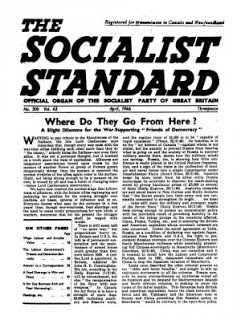The Priorities of Capitalism
All over the world capitalist governments facing an economic recession are eager to reduce expenditures. They are examining ways to cut pensions and welfare payments, but there is one area of government expenditure that shows no signs of cut-backs. ‘The USS Gerald R. Ford is the most expensive weapon ever created and will run to about $11.5 billion, with three ships costing about $40.2 billion. Even given these generous estimates, the Navy figures that the USS Gerald R. Ford could cost as much as $1.1 billion more than planned, making it far and away the service’s most expensive warship’ (Business Insider, 25 October). To protect sources of raw materials, markets and spheres of economic and political influence, the owning class must have up-to-date weapons of destruction.
A Cut-Rate Health Service
In times of economic downturn the government searches eagerly for ways to cut expenditure and one of the easier targets is the National Health Service. ‘The Royal College of Nursing (RCN) said that despite the Coalition’s promise to protect frontline staff from cuts the NHS workforce has fallen by almost 21,000 since the Coalition Government came to power. This includes a loss of more than 6,000 qualified nursing posts – from a total of 312,000 nursing posts in the NHS … Patient safety will be seriously undermined by falling numbers of nurses, with the RCN’s chief executive warning that standards of care ‘are going to get a lot worse’ (Independent, 13 November). Spend more on bigger and better bombs, but spend less on health services: that is how capitalism operates.
The Class Divide
The daily press in Britain is fond of creating the myth that workers are gradually improving their economic position in society, but occasionally a journalist will report on what is really happening. Here is an example from the writer Philip Collins giving the facts about Britain. ‘On current trends, an ordinary family will have 15 percent less cash coming in by 2020 than 2008. This has happened all over the world. Blue-collar workers in America have hardly had a pay rise in 40 years. Their counterparts in Germany and Canada have been stuck for a decade. In the UK the household fuel has risen 110 percent, council tax by 67 percent and food is 37 percent more expensive than in 2000’ (Times, 1 November). Needless to say, during this period the owning class have improved their economic standing.
The Widening Gap
Chrystia Freeland has spent 20 years of her life working for the Financial Times and Reuters and she has recently turned her long experience of the owning class into a book about them, entitled Plutocrats: The Rise of the New Global Super-Rich. It was recently reviewed by the press. ‘In the 1970s, the top 1 percent of earners in America captured about 10 percent of national income. Today their share has more than doubled to 22 percent … Bill Gates and Warren Buffett have the combined wealth (about $100 billion) of the bottom 40 percent of the US population – about 120m people’ (Sunday Times, 28 October).
Behind The Statistics
The recent economic downturn throughout Europe has led to the publication of staggering statistics about poverty. ‘Every fifth resident lives in poverty in Spain, new figures showed. The national statistics institute INE said 21.1 percent of the 47-million population lives below the poverty line, meaning they live on less than €7,355 ($9,610) annually … The number of minors aged under 16 living in poverty has increased to 21 percent from 19.4 percent in 2011’ (Turkish Weekly, 22 October). Behind the grim figures lies the day-to-day misery that capitalism forces on members of the working class. ‘A woman aged 53 jumped to her death from the balcony of her fourth-floor flat in Bilbao as bailiffs arrived to evict her for failing to pay her mortgage. There are 500 evictions a day in Spain’ (Times, 10 November).







